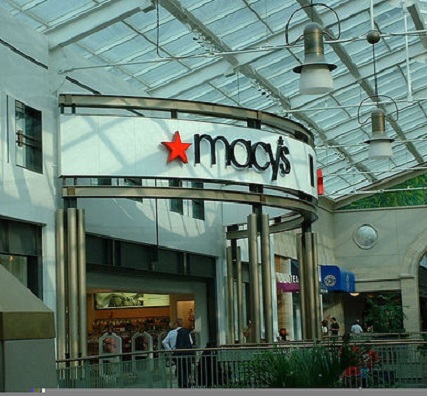Macy’s finds success through focus on mobile space
Retail giant Macy’s has been working to engage mobile consumers in a more dynamic way recently. The retailer has seen its customers evolve over the years, with more people becoming apt to use their mobile devices to shop and make purchases. At times, these consumers have been difficult to appeal to because of the lack of mobile services the retailer employed in the past. Over the past two years, however, Macy’s has established a strong grip on mobile consumers and continues to look for ways to engage these people with the services they have come to expect from the retailer.
QR codes and application overhaul provide better service to consumers
In the months leading up to the 2012 holiday shopping season, Macy’s began to use QR codes to direct consumers to digital content that could be found on the retailer’s mobile website. The company also launched a major overhaul of its mobile application, updating the platform to be more accommodating of mobile commerce. Macy’s saw 44% of the applications existing users download the updated version of the application before Black Friday last year. The overhaul spurred a 19% growth in the application’s user base.
Mobile commerce proves popular
In the retailer’s 39,000-square-foot store in Herald Square, New York City, store associates make use of mobile devices to provide information to customers concerning inventory and particular, often difficult to find, items. These devices are also used to process mobile payments. Macy’s recently began accepting mobile payments made through the use of Google Wallet and the retailer is part of a pilot project for Isis, one of the main competitors of Google Wallet, in Utah and Texas.
Macy’s finds balance in mobile focus
Macy’s has positioned itself to take advantage of the growing interest consumers are showing in mobile commerce. The retailer has managed to make itself stand out from amongst the competition by finding ways to engage mobile consumers and, more importantly, direct them to physical stores throughout the country. A focus on mobile consumers has, in the past, backfired for many retailers, leading many consumers to stop coming to physical stores. Macy’s seems to have found the appropriate balance to avoid this pitfall.
 An Ohio University professor from the Automatic Information and Data Capture lab is studying scans.
An Ohio University professor from the Automatic Information and Data Capture lab is studying scans.
The use of QR codes as an element of mobile marketing has generated considerable controversy as some companies have used them highly successfully, while others have experienced nothing but failures.
It has led some, perhaps prematurely, to write off the potential of these smartphone friendly barcodes.
The director of the Automatic Information and Data Capture lab, a professor named Kevin Berisso at Ohio University, has been examining the use of QR codes and many campaigns in which they have been included, and is now using this ongoing project to assist mobile marketers in developing campaigns that will allow them to get the most out of these barcodes.
The findings that Berisso has produced includes recommendations for the best use of QR codes.
To start, Berisso has pointed out that it is important to make sure that if QR codes are chosen as a part of a marketing campaign, that this is done only when the right audience will be targeted. This is because there are certain people who are more likely to make scans than others. For one thing, the barcodes require smartphones in order to be scanned. Those within the age group of 18 to 29 years have a 66 percent likelihood of owning the right type of device. However, those in the 50 to 64 year old age group are far less likely, at 34 percent.
Moreover, Berisso also found that QR codes that are used in a way that tells smartphone users precisely why they want to scan – to receive a discount, to enter a contest, to receive a free offer, etc – are more likely to be scanned and produce results than those that simply lead to a homepage without a specific benefit to the user.
The actual quality of the QR codes in terms of the ability to scan them was also identified as highly important. The correction level needs to be appropriate, but so is the contrast and distinction. Basic black and white are typically best, as they produce the most contrast. Berisso cautioned mobile marketers against using rich black on color ads, as they will make the codes far more difficult to scan – even if they are more appealing to the eye.
The research regarding the use of QR codes is continuing, and the labs are producing lists of helpful recommendations. Primarily it involves being practical and using good common sense.


 An Ohio University professor from the Automatic Information and Data Capture lab is studying scans.
An Ohio University professor from the Automatic Information and Data Capture lab is studying scans.